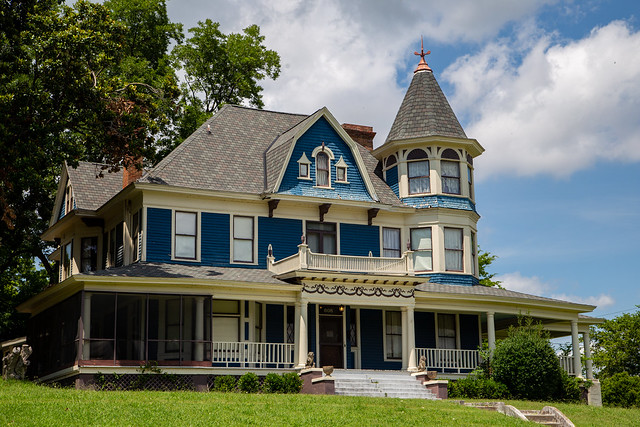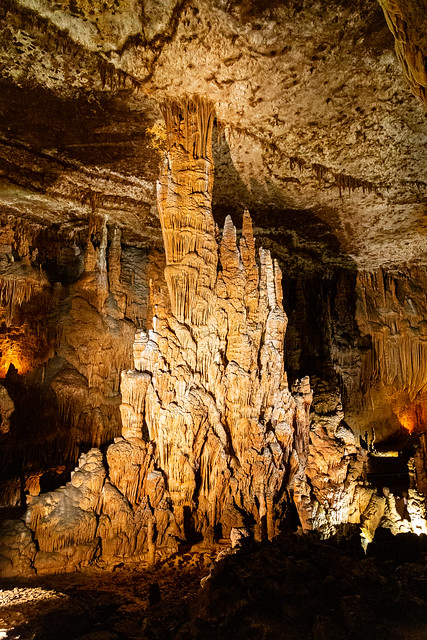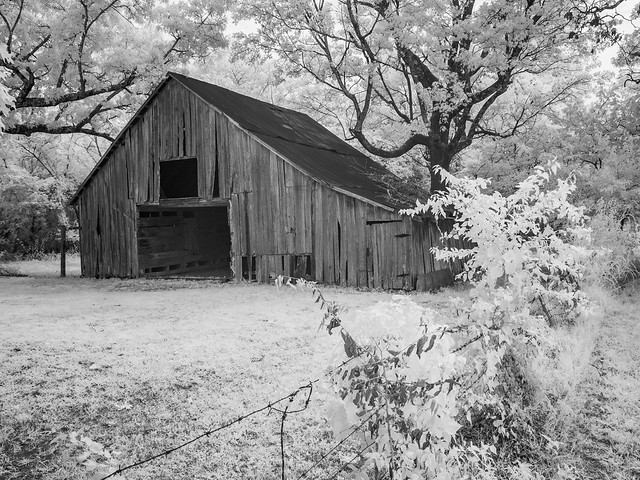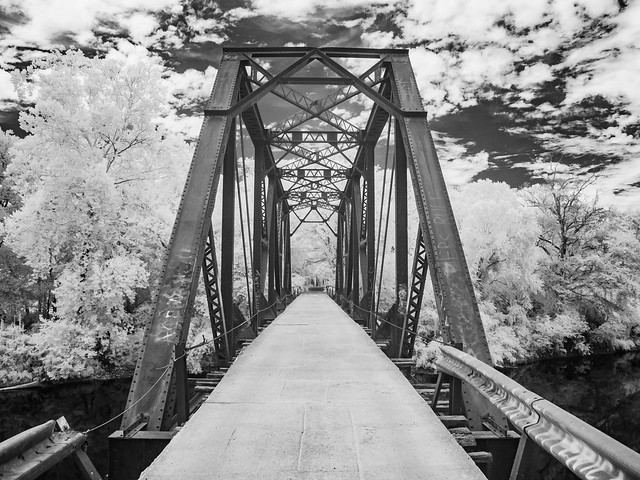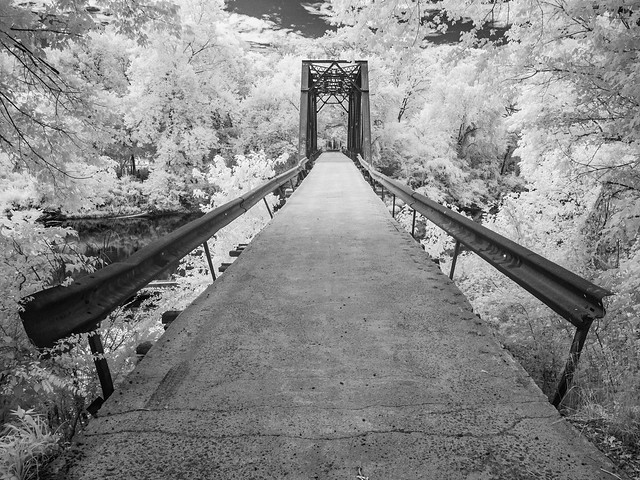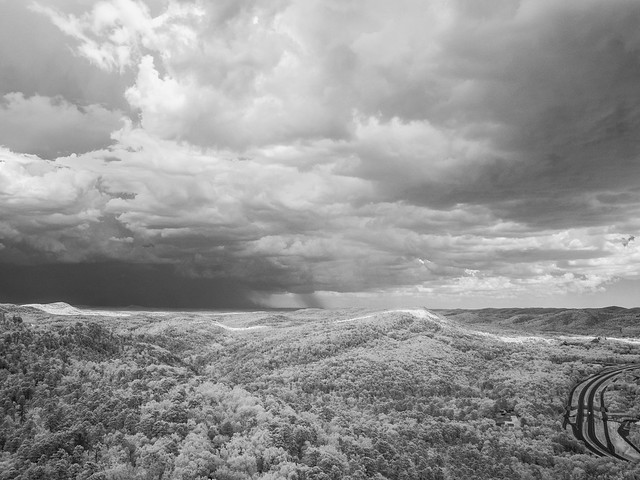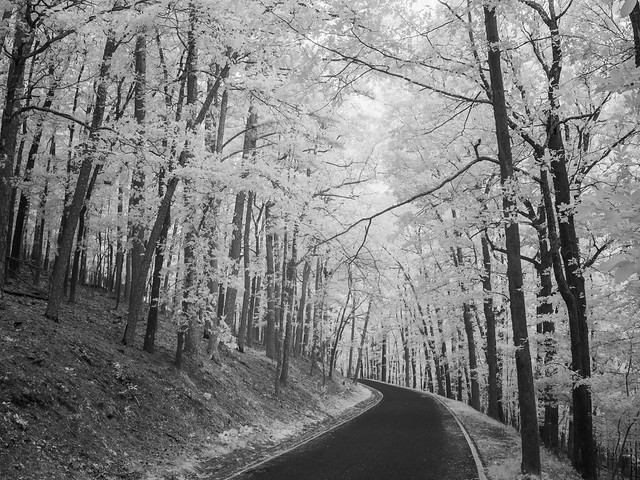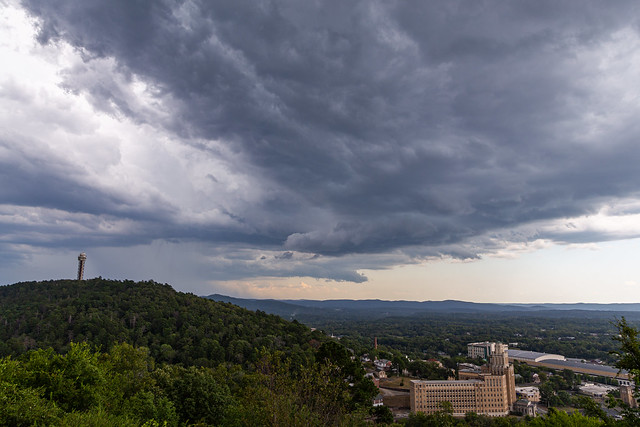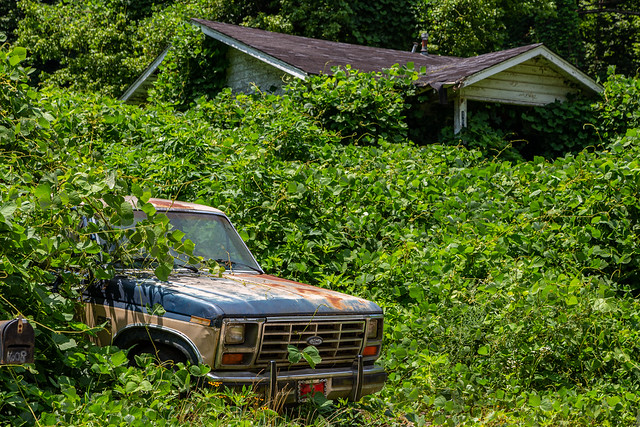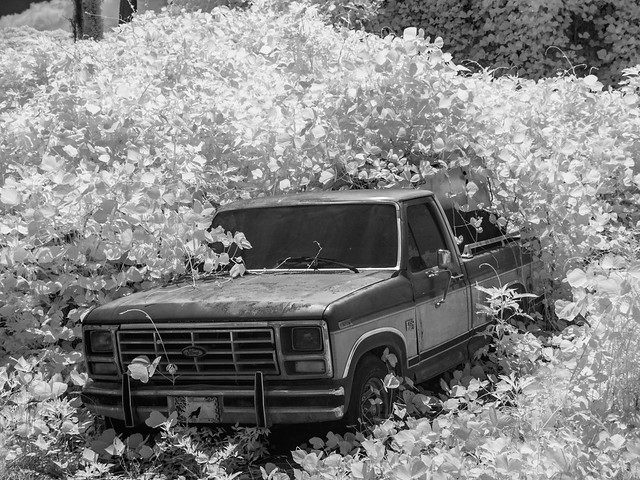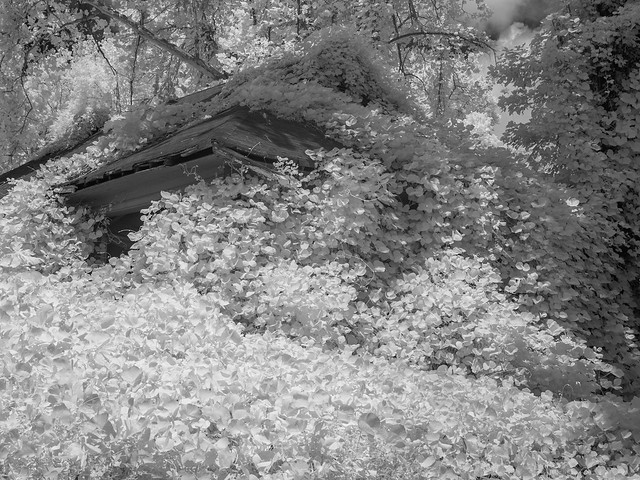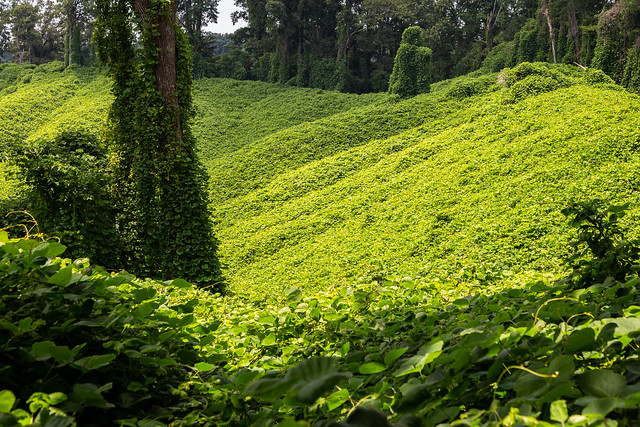Helena was once one of the most vibrant and important cities in Arkansas, but now it feels neglected and forgotten. It was incorporated in 1833, along a spot where Crowley's Ridge met the Mississippi River. The town quickly became a vital spot along the River during the steamboat era. In 1883, Mark Twain wrote that "Helena occupies one of the prettiest situations on the Mississippi."
Several Civil War battles were fought in and around Helena. And in the 1930s, Helena became known as "the blues capital of the Delta," and was the home to such musical luminaries as Robert Johnson, Robert Lee McCollum, Roosevelt Sykes, and Sonny Boy Williamson. But modern economic realities of the Delta have been rough on the city.
I don't know why Helena feels so cut off from the rest of the state. Maybe it's because its location? It is on the Mississippi River, but far from any interstates or other big cities. Our state government often has to be reminded that the Delta exists, especially for places like Helena. The city has been under a boil order since the end of June due to issues with its aging water infrastructure. The state of Arkansas, which currently has a billion dollar surplus, offered the city a paltry $100,000 loan.
There are lots of neat old buildings in Helena, but many have been left empty and abandoned. And sadly, many of those were severely damaged by a storm in 2020. But the buildings that remain paint an interesting picture about what Helena was once like, and the history it still has to share.


One building here used to house Bullock's Cafe, which I was wish was still open because the food there must have been delicious. A friend I follow on Twitter (Terry Buckalew - @tmabuckalew - who you should definitely follow if you are interested in the Blues) reports that Bullock's had amazing food, and the owner Cora Bullock would pull you in the back and you could pick your food right off the stove. It was famous for awhile, and was in a few travel magazines and news stories.



There is a picture of Cora at work in the kitchen on this
photoblog from 2007.

This old building sits a few blocks away, along the Mississippi River levee. It has been abandoned for some time now, with the gutted interior now covered in layers of graffiti and random debris. The outside is home to these invasive vines, looking to take over the concrete walkway.
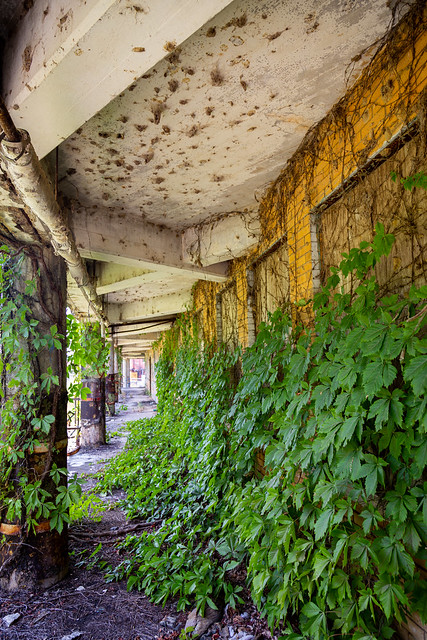

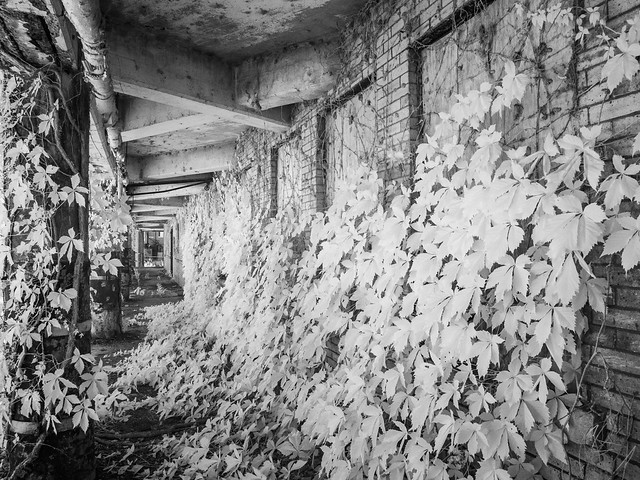

This cracked and faded paint was on one of the rusty metal doors leading into the building.

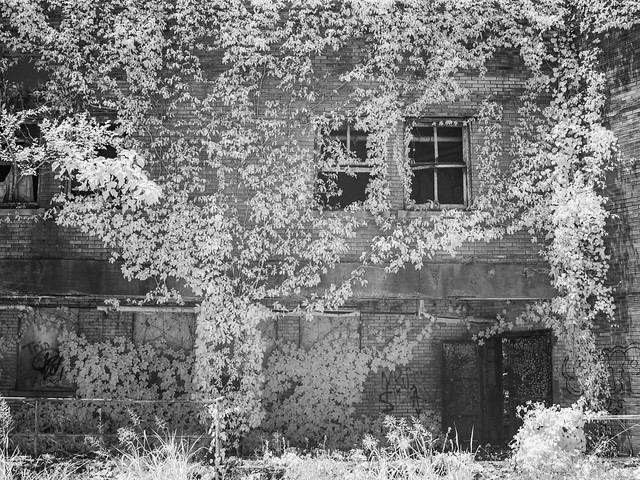
A few blocks away is an old motel, the Downtown Inn. It has been closed for several years, with tall weeds sprouting in the former parking lot.
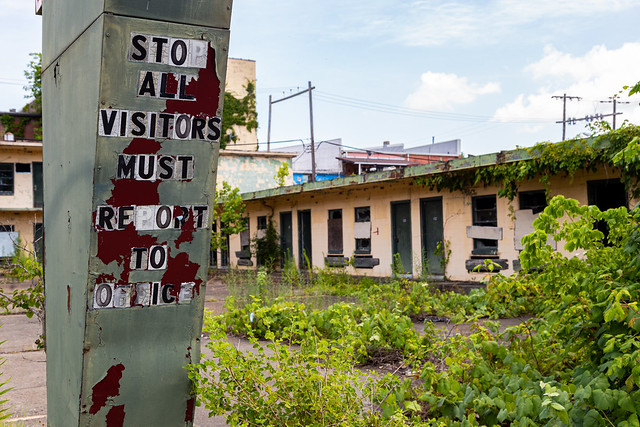

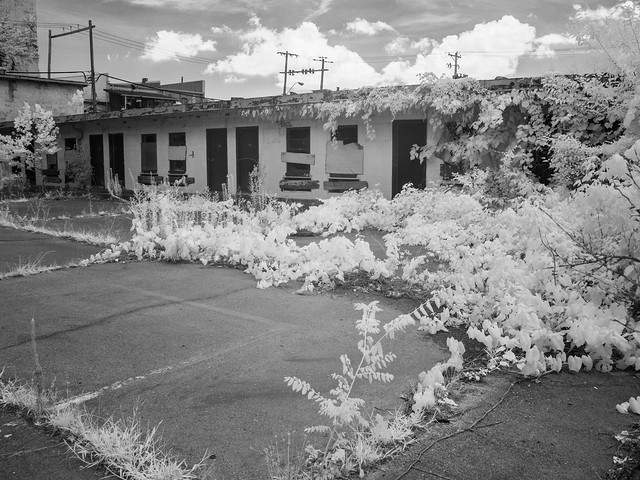
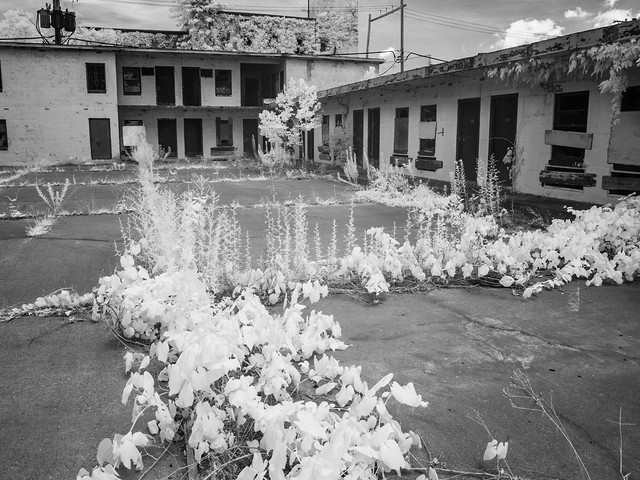
And a few more shots from around downtown Helena:
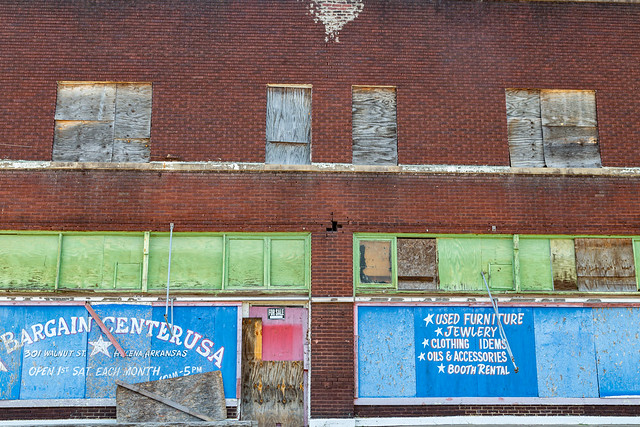




I drove over to the industrial area along the river that looks like its home to buildings that process grain (I guess, I really have no idea?). There is an old building here, that may have once been a factory. It sits empty and abandoned, the only inhabitants are mice (judging from the numerous pieces of poop on the ground).
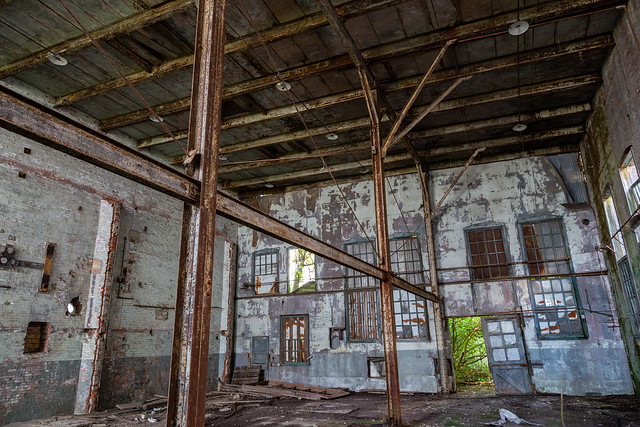


In one part of the building, trees were seemingly growing right on the concrete floor. They were pretty tall, so it seems like they've been growing there for quite some time.

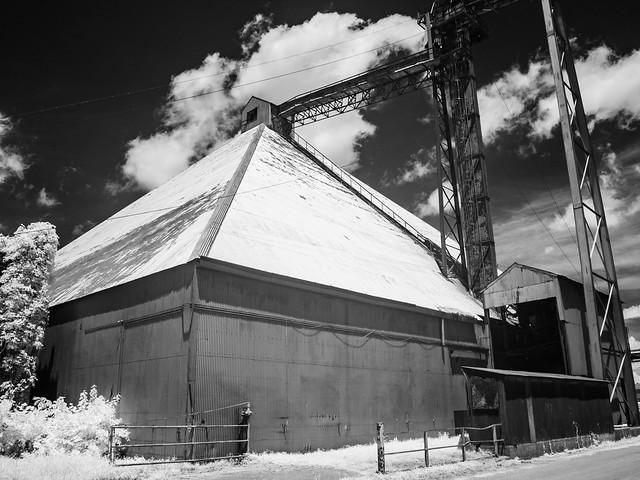
After that I needed to start driving back towards home. But I got one last shot at this neat old Victorian house. They definitely don't make them like this anymore:
